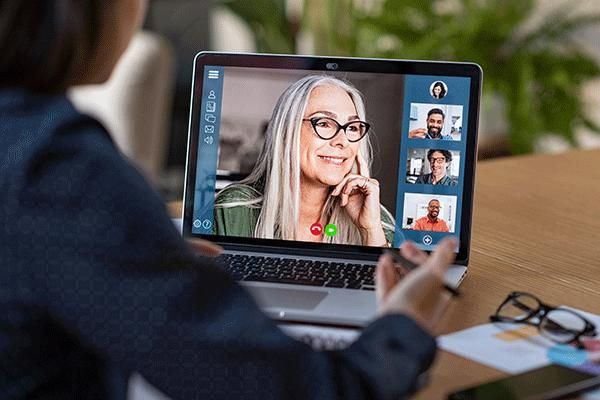How long have you wanted to make a massive organizational over haul to adopt a new technology? But you’re stuck. Because the technology requires restructuring, redesigning, or some sort of rethinking of all aspects of operations.
So, although industry leaders are attracted to the latest and greatest technologies, adopting them as a profitable part of business is a completely different story.
Yet, there remain plenty reasons to believe. Technology exists to make things easier, more convenient, faster, lower cost. That doesn’t mean that the hurdles go away. Recently, other challenges have been added to the list, including privacy concerns and security.
Now, the COVID-19 pandemic has forced the hand for many considering adopting new technologies by limiting human contact. Fortunately for the companies that are forced to innovate faster than they had planned, the technology exists and is ready to be implemented.
Evolving Operations
J Turner recently surveyed 1,400 property management executives on their response to the COVID-19 issue and found that 45% of respondents mandated that corporate staff work from home early this month and more than 77% canceled attending all conferences.
So, the first thing that a lot of organizations are faced with is managing day-to-day operations with a remote workforce.
Housing organizations are faced with managing day-to-day operations with a remote workforce.
Adobe Stock Image
“Communication and project management will continue to be key factors, and everyone will need to adapt to virtual meetings,” said Tim Sandlund, founder of Start Building, a resource for technology and innovation within the building products industry. “Tools like Zoom allow for simple and easy video meetings directly from your phone, tablet or computer. App Innovations like BuildBook make collaboration and communication incredibly simple, and can help build efficiencies within your projects.”
Steve Boyack is CEO at CA Ventures, a Chicago-based global real estate investment and management company, and he agrees that there is increased focus on digital communication methods.

Steve Boyack serves as CEO at CA Ventures, a Chicago-based global real estate investment and … [+]
CA Ventures
“Being able to quickly and effectively contact residents, prospects, and vendors has proven to be invaluable,” said Boyack. “For us, this has always been second nature, but the industry as a whole is seeing less and less in person and verbal communication, something everyone should be fully equipped to handle. Policies for text messaging, emailing, and communicating with residents are absolutely critical.”
That remote staff is now responsible for coming up with ways to continue with business as normal and here again is where technology is being adopted.
With the state and federal mandates due to the virus, on site construction workers need to stay a certain distance from each other and even the number of them allowed on a job site is also minimized, which is wreaking havoc on schedules and revenue projections. In some states, construction has been completely halted.
“Managers need to walk the construction site to check work, code approvals and permits need to be issued throughout the process,” said Sandlund. “Technology like Streem AR allows video collaboration and the ability to interact in augmented reality while being remote. You basically video chat and show what you need to show, and the user on the other end can write notes, circle items, point out issues, all while being across town.”
He also points out that virtual reality technology is the next level of innovation, providing a platform for whole demo homes to be viewed online and to be fully interactive.
“Prospective buyers could walk through the entire home as if they were there, but let’s be honest, in the short term it will be difficult to convince people to put on a headset during the COVID-19 outbreak,” said Sandlund.
Mike Delprete, a real estate tech strategist, sees the social distancing requirements leading to accelerated adoption of services that facilitate streamlined real estate transactions, increasing the adoption of iBuyers. He classifies it as an evolution of consumer needs, not a solution to a pandemic, but accelerated by the pandemic.
On the distribution end, new robotic technologies, like Agility Robotics, could create efficiencies by doing repetitive tasks and also eliminating the risk of transmitting viral diseases said Chris Moehle, managing director of The Robotics Hub, a venture capital group located in Pittsburgh.
As people are creating distance between each other, working teams have to find the technology that allows them to collaborate and still deliver on project deadlines. Virtual reality platforms, such as Hackrod, can bring together teams in Tokyo and Los Angeles to create a design and understand how it will perform in a real-world context.
Today, Tomorrow and Next Week
The general sentiment across the industry has been that changes are happening at a break-neck pace. Most companies are anticipating survival mode and pulling out all stops to adopt technology quickly.
Sandlund predicts that now, rather than AR and VR technology being common in five years, it will be just two to three years.
Boyack is seeing this change first hand, with a rise in virtual touring, self-touring, and a more automated apartment search process.
“These are not new technologies, but have been slow to adapt due to consumer behavior,” Boyack said. “Behaviors are now being forced to change and my prediction is that the change for most will be lasting.”
The impact to his organization doesn’t stop there though. Boyack sees technology paving the path for many operational efficiencies, in addition to improved resident engagement and investor relations.
“We are on the cusp of a near infinite amount of information flowing in and out of our buildings,” he said. “With the proper infrastructure, through technology, we will see our efficiencies increase 10-fold. By building in systems to monitor and track essential building functions such as HVAC, electrical, water, motion, temperature, we will be able to not just perform preventative maintenance, we will be able to predict failures in building systems before they happen, saving hundreds of thousands of dollars in repairs, damages, and downtime.”
This automation will take responsibilities away from staff so that they can then shift to focus on resident interactions and an elevated, more customized approach to continually build upon the “human element” in a way that was never before possible.
How Much Time Do We Have?
Any new technology takes set up time and testing. Some technologies might die in that phase, or they also may be redesigned to be more appropriate for the specific application.
Needless to say, this takes input from the technology developer and from the user, collaborating as a team. In the case of CA Ventures, it also takes a good design and foresight from the project’s developer. Developers have the additional challenge of preparing housing projects for future technology that might be undefined at the time of design and development.
Downfall – Limiting Creativity?
Adding technology to the housing industry sounds like a match made in heaven, but are there downsides?
Gary Hamel, academic and director for the Management Innovation eXchange, presented at the 2019 World Business Forum that 70% of jobs in US require no original thinking or creativity, saying that there are 107 million jobs in America where employees have little or no scope to exercise their imagination. He warns that if we treat those employees like robots, they can and will be replaced by robots.
Fifty-two percent of 5,700 Harvard Business School grads said that they believe a typical company will employ fewer workers three years from now.

Chris Langford is partner at IDEA Fund Partners, a venture capital group that operates across North … [+]
IDEA Fund Partners
“COVID-19 will likely shine a light on how human-capital dependent the industry is today,” said Chris Langford, partner of IDEA Fund Partners, a venture capital group operating across North Carolina. “As non-essential and high human contact industries grind to a halt, the need for greater automation and technology adoption, from the sales to construction to delivery, will become increasingly apparent. While no level of automation can fully eliminate the human-centricity of the industry, the inability to survive in a work-from-home environment will shine through.”
Sandlund thinks that these automated processes will just enhance creativity and innovativeness. Organizations that are able to adopt new technologies will build more efficiency now, and then will be able to focus on what’s coming, being more nimble, innovative and responsive.
Boyack agrees that adopting automation will allow CA Ventures’s staff to focus more on creativity and innovation by removing mundane and monotonous tasks.
“[Automating allows] learning more about our residents and delivering them an exceptional experience beyond anything seen today,” Boyack says. “Automation does not just create efficiencies. It creates opportunities.”
One of those opportunities would be for materials manufacturers. Langford thinks manufacturers will need to work closely with builders and architects as this trend emerges to create products that fit in an increasingly digital design and production process.
Adopting new technology is proving to be a survival mechanism that Boyack admits will most likely be the biggest win coming out of this terrible crisis.
As another positive lining, Langford says that, “While nobody will “win” from COVID-19, as Americans shelter in place, I believe they will rekindle the connection with their home in a way that hasn’t taken place in quite some time and that connection will drive further investment in housing.”
Here’s to hoping and a super-fast end to this.















